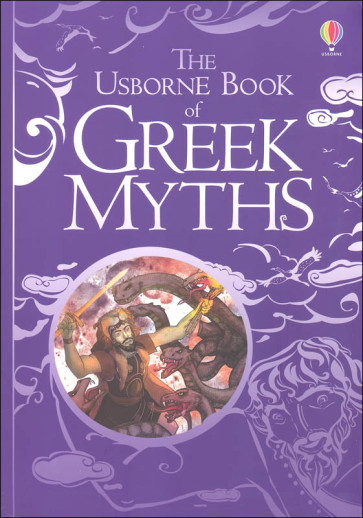We use cookies to make your experience better. To comply with the new e-Privacy directive, we need to ask for your consent to set the cookies. Learn more.
Book of Greek Myths (Usborne)
Here at Rainbow Resource, we carry a good variety of resources for Greek mythology, and now we found another good one. The Usborne Book of Greek Myths is a very thorough, comprehensive coverage on the topic. The book is divided into two parts. The first and bigger part is the actual myths. The second part is a guide to the myths - who's who, where did it happen (with maps), and a glossary. The font is large, and the artwork is a wonderful enhancement to the stories - full color illustrations highlighting details of the stories. This Usborne book can be a tremendous help with your study of Greek myths and the lessons to be learned from them. 301 pages, paper board cover. ~ Donna
A sumptuously illustrated treasury of Greek myths filled with lively retellings of stories of brave heroes, powerful gods and terrible monsters, presented in a luxury, cloth-covered hardback. With thirty-two popular and exciting stories including Pandoras Box, The minotaur and the Labyrinth, Jason and the Golden Fleece. Illustrated notes in the margins offer further insights into the history of Greek myths. Includes an extensive reference section with illustrated maps of Ancient Greece, a glossary of tricky words, a huge Whos Who of heroes, monsters, Gods and locations and an online pronunciation guide to Greek names.


Looking for a 1st book on mythology for my 9 year old grandson who has shown an interest in this topic.
I am following in the interests of my children, who are currently interested in learning about mythology. Usborne books have always been of the highest quality.
Daughter was interested in mythology and we like Usborne books
Daughter loves anything related to Greek mythology and she really enjoyed this book! Nice quality book that should be on our shelf for many years.